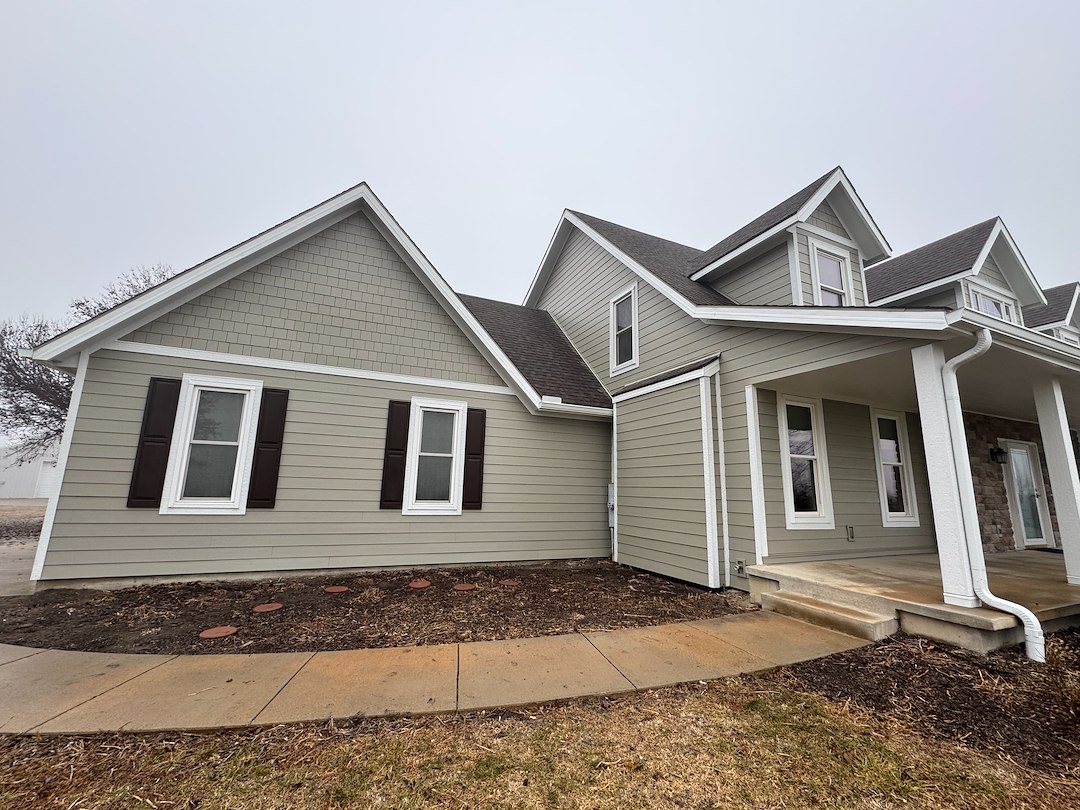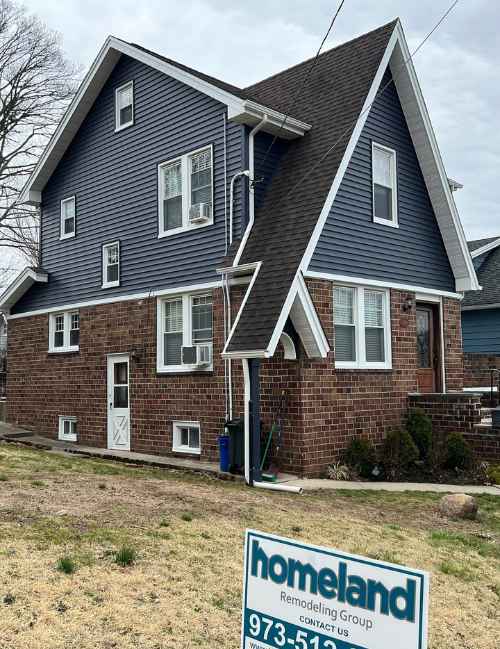The Essential Guide to the Numerous Kinds of Siding and Their Distinct Advantages
In the realm of home renovation, choosing the ideal exterior siding is a critical decision that affects both aesthetic appeal and useful efficiency. The selection of materials offered, such as timber, vinyl, fiber concrete, steel, and block, each deal distinct benefits that deal with different requirements and choices. Recognizing these distinctions can substantially boost the long life and worth of a building - morris siding contractor. However, with a lot of options to think about, which house siding product absolutely sticks out for your specific task? Exploring these options can bring about notified decisions that line up with both design and functionality.
Wood House Siding
Wood house siding, a preferred option for domestic exteriors, supplies an ageless visual that incorporates natural charm with structural stability. This exterior siding product is available in numerous designs, including clapboard, tiles, and board-and-batten, permitting home owners to customize their appearance to match their layout preferences. Wood house siding is commonly crafted from durable varieties such as cedar, redwood, or yearn, which are known for their resilience and capability to endure ecological stress factors.
One of the main benefits of timber house siding is its excellent insulation residential properties, which can contribute to power efficiency and reduced home heating expenses. Additionally, timber exterior siding is eco-friendly, making it an eco-friendly option when sourced sustainably. Normal upkeep, including paint or discoloration, can extend its life-span and enhance its look, enabling property owners to maintain the natural charm of the timber.
Nonetheless, possible disadvantages consist of sensitivity to bugs, rot, and climate damages, demanding appropriate treatment and maintenance - morris siding contractor. In spite of these problems, when correctly looked after, wood exterior siding can give a attractive and durable option that enhances the personality of a home while providing a cozy, welcoming ambience

Vinyl House Siding
Vinyl siding has actually emerged as a leading selection for home owners seeking a low-maintenance outside option that incorporates toughness and affordability. This versatile material is crafted from polyvinyl chloride (PVC), making it resistant to numerous climate condition, including wetness and UV rays. Consequently, plastic house siding does not warp, rot, or fade, making certain lasting visual appeal.
One of the primary advantages of vinyl house siding is its extensive variety of designs and colors, permitting property owners to attain the desired appearance for their residential or commercial property without the need for constant repainting. Additionally, plastic siding is easy to set up, which can substantially minimize labor expenses throughout construction or remodelling jobs.
Plastic siding additionally adds to energy effectiveness. Several alternatives feature insulation backing, which boosts thermal efficiency, helping to preserve comfy interior temperature levels and possibly decreasing power expenses. Furthermore, its smooth surface helps with easy cleaning, needing only periodic washing with a garden pipe to remove dust and debris.
Fiber Cement Exterior Siding
Fiber concrete house siding has actually gained grip amongst contractors and homeowners alike as a result of its remarkable mix of resilience and visual adaptability. Made up of a combination of sand, cellulose, and concrete fibers, this siding alternative is crafted to stand up to extreme climate condition, including high winds, heavy rainfall, and temperature level changes, making it a lasting selection for property exteriors.

Among the primary advantages of fiber concrete exterior siding is its resistance to pests, such as termites, and its non-combustible nature, offering improved fire safety and security. morris siding contractor. Additionally, it is available in a vast range of shades, textures, and styles, allowing house owners to attain their preferred visual without giving up efficiency
An additional advantage is its low upkeep requirements; fiber concrete house siding normally requires painting or discoloration every 5-10 years, which is much less constant than other materials. Moreover, its long life adds to a lower general expense of possession, as it minimizes the demand for frequent repair work or substitutes.
Ultimately, fiber cement house siding stands for an outstanding investment for those looking for a resilient, appealing, and functional exterior choice, integrating both kind and function to boost the home's aesthetic charm.
Metal House Siding
The allure of steel house siding depends on its robust longevity and modern-day visual allure, making it a favored selection for modern style. Available in products such as aluminum and steel, steel home siding uses a series of shades and surfaces, allowing homeowners to accomplish a Going Here personalized look that enhances their design vision.

Energy efficiency is an additional substantial benefit, as several steel house siding products are designed with insulation alternatives that assist manage interior temperature levels. This can lead to reduced power expenses over time. Additionally, steel siding is frequently recyclable, making it an environmentally pleasant choice for sustainability-minded homeowners.
The installment procedure for steel house siding can be reasonably uncomplicated, causing a quicker turn-around time for building jobs. Overall, metal home siding combines functionality and design, making it a useful alternative for those seeking a enduring and visually enticing exterior surface.
Block and Stone House Siding
Block and rock exterior siding sticks out as an ageless selection that enhances the aesthetic beauty of any kind of home. Recognized for their toughness and reduced maintenance, these products provide a remarkable return on investment while boosting the home's curb charm. Available in different shades, appearances, and patterns, block and rock can be customized to fit diverse architectural styles, from typical to contemporary.
Among the main advantages of brick and rock siding is their power effectiveness. Both materials possess natural insulating residential or commercial properties that assist regulate indoor temperature levels, potentially minimizing heating and cooling prices. Furthermore, they use exceptional fire resistance contrasted to other home siding options, adding to improved security.
An additional advantage is their longevity. Block and stone can last for years, often calling for minimal maintenance past periodic cleaning. Unlike wood siding, they are resistant to bugs and rot, making certain a resilient exterior that withstands the elements.
Conclusion
In summary, the selection of siding considerably affects a home's visual allure, energy effectiveness, and upkeep requirements. Each type of home siding-- whether wood, plastic, fiber concrete, brick, or metal and rock-- uses distinct advantages tailored to numerous property owner preferences and ecological conditions.
One of the key benefits of timber exterior siding is its outstanding insulation properties, which can contribute to power efficiency and reduced home heating costs. In addition, wood house siding is biodegradable, making it an ecologically friendly option when sourced sustainably.One of the main websites advantages of steel siding is its resistance to different ecological aspects.Power performance is another considerable advantage, as lots of steel exterior siding items are created with insulation choices that assist control interior temperature levels. Each kind of house siding-- whether timber, vinyl, fiber steel, concrete, or click for more block and rock-- provides distinct benefits tailored to numerous house owner preferences and environmental problems.